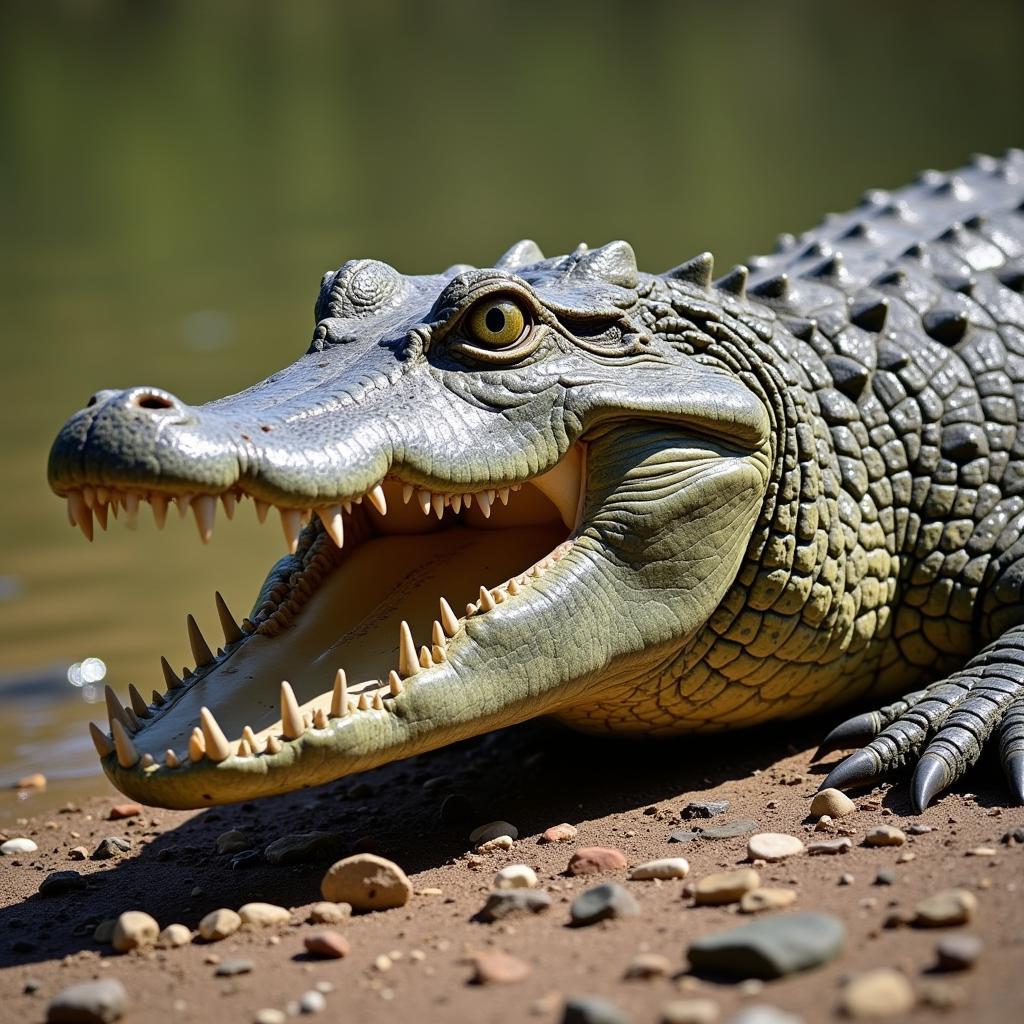African Desert Snakes: A Glimpse into the World’s Most Intriguing Reptiles
Africa, a continent renowned for its diverse landscapes, harbors a myriad of fascinating creatures, including snakes. Among these, desert snakes hold a special allure, adapting to the harsh conditions of arid environments and showcasing remarkable survival strategies. This article delves into the captivating world of African Desert Snakes, exploring their unique characteristics, adaptations, and the crucial role they play in the delicate desert ecosystem.
The Challenge of Desert Life
African deserts, like the Sahara, Namib, and Kalahari, are characterized by extreme temperatures, limited water sources, and sparse vegetation. These challenges present a formidable obstacle for any animal, especially snakes, which rely on external heat sources to regulate their body temperature.
Desert snakes have evolved incredible adaptations to thrive in this unforgiving habitat. Their bodies are often slender and streamlined, allowing for efficient movement across sand and rocky terrain. Their scales are typically smooth and iridescent, reflecting sunlight and minimizing heat absorption.
Navigating the Desert: Strategies for Survival
African desert snakes have developed various ingenious strategies to navigate the challenges of their environment.
1. Water Conservation: Mastering the Art of Hydration
Water scarcity is a paramount concern for all desert creatures. Desert snakes have mastered the art of water conservation through several methods:
- Nocturnal Activity: Many desert snakes are nocturnal, emerging at night when temperatures are cooler and humidity is higher. This behavior minimizes water loss through evaporation.
- Metabolic Efficiency: Desert snakes have adapted to have a slower metabolism, reducing their overall energy expenditure and water requirements.
- Behavioral Adjustments: Some species, like the Sahara sand boa, can survive for extended periods without drinking water by extracting moisture from their prey.
2. Hunting and Prey Selection: Adapting to Limited Resources
Finding food in a barren landscape requires cunning and adaptability. Desert snakes have evolved specialized hunting strategies:
- Ambush Predators: Many desert snakes rely on ambush predation, waiting patiently for prey to approach before striking with lightning speed.
- Venomous Adaptations: Some desert snakes, like the horned viper, have developed potent venom that quickly paralyzes prey, ensuring a swift and efficient kill.
- Dietary Flexibility: Some desert snakes have a broad diet, consuming small mammals, lizards, birds, and even insects. This flexibility allows them to adapt to changing prey availability.
3. Thermoregulation: Balancing Heat and Cold
Maintaining a stable body temperature is crucial for survival in deserts, where temperatures can fluctuate drastically between day and night. Desert snakes have developed various mechanisms to regulate their body temperature:
- Basking: Snakes are ectothermic, meaning they rely on external heat sources to maintain their body temperature. They frequently bask in the sun to absorb warmth.
- Burrowing: During the hottest part of the day, many desert snakes retreat to burrows to escape the scorching sun and maintain a cooler body temperature.
- Behavioral Adaptations: Some species, like the sidewinder rattlesnake, use a unique sidewinding locomotion, allowing them to move efficiently across loose sand without overheating.
The Vital Role of Desert Snakes in the Ecosystem
African desert snakes are not simply fascinating creatures; they play an integral role in maintaining the delicate balance of their desert ecosystem. They are vital components of the food web, controlling populations of rodents and other small animals.
Dr. Amani Kibwana, a renowned herpetologist specializing in African desert snakes, states: “Snakes are often misunderstood and feared, but they are essential to the health of the ecosystem. Their presence ensures that populations of prey animals remain in check, preventing overgrazing and preserving the delicate balance of plant life in the desert.”
Frequently Asked Questions
Q: Are African desert snakes dangerous to humans?
A: While some desert snakes are venomous, most are not aggressive and will only bite if provoked. It’s essential to exercise caution and respect their space.
Q: Can I find desert snakes in my backyard?
A: The likelihood of encountering a desert snake in your backyard depends on your location and the presence of suitable habitat. If you live near desert areas, it’s always wise to be mindful of your surroundings.
Q: How can I protect desert snakes?
A: Support organizations working to conserve desert habitats and educate others about the importance of these fascinating creatures. Avoid disturbing their burrows and be mindful of your impact on their environment.
Conclusion
African desert snakes, with their remarkable adaptations and vital ecological role, offer a captivating glimpse into the resilience and diversity of life in some of the harshest environments on Earth. Understanding their unique characteristics and the challenges they face can foster appreciation for these often-misunderstood reptiles and inspire efforts to protect their fragile desert ecosystems.


